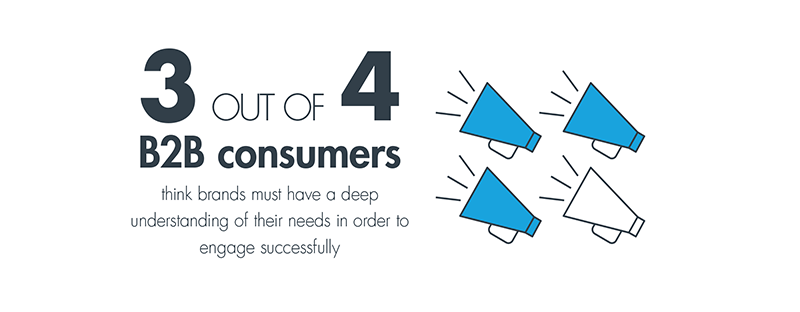
The Engagement Economy: How to build the relationship B2B buyers want
Recently, marketing automation vendor Marketo partnered with Illuminas to conduct research on The State of Engagement in 2017. They surveyed 1,192 marketers and 1,000 B2C and B2B buyers to find out how marketers build relationships with their buyers and where there is room for improvement.
The study’s main conclusion — that “marketers think they are effective at customer engagement, but consumers think they could do better” — draws a clear parallel with TrustRadius’ own research into the The B2B Buying Disconnect, in which we specifically looked at the gaps and opportunities between business technology buyers and vendors. Drawing on findings from both reports, we explored how B2B marketers in particular can “do better” at engaging buyers by building a stronger relationship. The relationship buyers want involves more listening, more partnership, and more opportunities to advocate for the vendors who show they care.
In Marketo’s study, both B2B and B2C buyers reported that stronger engagement with brands leads to a better overall experience, receiving more relevant discounts and promotions, faster resolution of problems, getting the latest information on products and services, and feeling valued, heard and wanted. Yet B2B buyers identified an additional benefit that wasn’t as relevant to B2C: having a better relationship with vendors.

In addition to prioritizing vendor relationships, B2B buyers also hold their vendors to a higher standard. For example, 66% expect their interactions with vendors to be personalized, versus 56% of B2C buyers. They also use more channels to engage with their vendors and expect their data to be integrated across touch points. At the same time, the B2B buyers who have these more in-depth relationships are often happy to return the favor by advocating for their vendors.
Three steps to better B2B engagement
Based on Marketo’s findings, here are three ways vendors can leverage their customers to strengthen buyer relationships.
1. Start by listening
When it comes to quantifying engagement, the biggest gap between B2B buyers and marketers is specifically in the area of listening: 84% of marketers say they actively listen, act on feedback, and close the feedback loop, while only 69% of B2B buyers feel this is true of the vendors they interact with.

Marketers do know that listening is important. When asked about what makes a company innovative, marketers responding to Marketo’s survey touted the importance of talking to customers and getting feedback:
“They strongly believe in and emphasize customer reviews and engage people with high value at the right channels.”
“They regularly monitor and review their customer or partner feedback and act on it in a very positive way.”
“Asking customers what they want from their products and tracking usage to better improve their products.”
2. Become a trusted partner
In our own study, 62% of B2B buyers said their vendor played a tactical role in the purchasing process, performing activities such as answering questions, providing technical information, and sharing pricing. Just 23% of buyers described a strategic role, where the vendor became more of a trusted partner. Unsurprisingly, the strategic vendors were in turn more influential over the purchase decision.
Similarly, Marketo’s research shows that 67% of buyers see engagement with the brand as relevant but primarily transactional. Yet B2B buyers, more so than B2C ones, want a partner-like relationship with vendors where they feel understood.

There’s work to be done here. According to Marketo’s study, the number one reason buyers don’t engage with vendors is they send too much irrelevant content. 65% of B2B buyers feel vendors could do a better job aligning engagement activities with their preferences, versus 45% of B2C buyers who think brands could do better.
One effective way of both listening to customers and building relationships with buyers is to connect those two groups via reviews. B2B reviews are an excellent way of collecting in-depth feedback about your product, responding to that feedback, and allowing buyers to view the full process and witness first-hand that you care about your customers.
3. Proactively give customers an outlet
In Marketo’s research, 66% of B2B buyers said they want to advocate for the vendors who demonstrate they care. For reference, that is 15 points higher than the B2C buyers. This is significantly higher than the number of buyers who said they connect with other customers to share information or provide feedback directly to the vendor.
Similarly, our research showed that existing customers were an underutilized resource for many marketers: while 42% of respondents had recommended the product they purchased to a peer, and 81% rated the product an 8 or above, only 20% had taken an advocacy action that the vendor could leverage more broadly, such as providing a testimonial or serving as a customer reference.
A review program is one way to get your customers on the record, authentically and at scale. Once you have your customers on the record, sharing their feedback with your buyers demonstrates that you understand your buyers’ goals and can connect them to a network of peers with similar needs. It also shows that you take the potential limitations of and concerns about your product seriously, and those hard conversations are an important part of any strong relationship.




